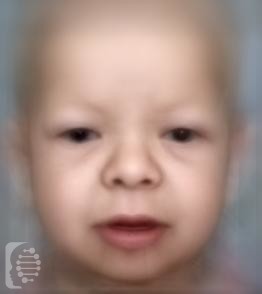What is Gapo syndrome?
Gapo syndrome is a rare congenital syndrome affecting the connective tissue in the body.
Common symptoms of the syndrome include short stature (due to prenatal growth restriction), unique facial features, alopecia, and issues relating to the eyes and ears.
First identified in 1947 there have been just 38 identified cases to date.
This syndrome is also known as:
GAPO; GAPO syndrome; Growth Retardation, Alopecia, Pseudoanodontia, and Optic Atrophy.
What gene change causes Gapo syndrome?
Mutations in the ANTXR1 gene are responsible for the syndrome. It is inherited in an autosomal recessive pattern.
Autosomal recessive inheritance means an affected individual receives one copy of a mutated gene from each of their parents, giving them two copies of a mutated gene. Parents, who carry only one copy of the gene mutation will not generally show any symptoms, but have a 25% chance of passing the copies of the gene mutations onto each of their children.
What are the main symptoms of Gapo syndrome?
The main facial features of the syndrome include a high and bossing forehead, puffy eyelids, a depressed nasal bridge, anteverted wide nostrils, a thick upper lip, low-set ears, a very small jaw, and a premature aging appearance due to wrinkling of the skin. The primary and adult teeth of an affected individual will form but not erupt.
Issues relating to the eyes include optic atrophy, glaucoma, strabismus, ptosis, and a number of other different conditions that affect the eyes and eyesight. Issues relating to the ears, or otorhinolary irrigologic features include deafness.
Alopecia is a main symptom and may lead to partial or complete loss of scalp hair. Indfiodivudlas will also jabve sparse eyebrows and lashes.
Mild intellectual disability is also another feature of the syndrome.
Possible clinical traits/features:
Decreased corneal thickness, Delayed skeletal maturation, Malar flattening, Decreased skull ossification, Delayed eruption of teeth, Delayed cranial suture closure, Everted lower lip vermilion, Keratoconus, Joint hypermobility, Mandibular prognathia, Low-set, posteriorly rotated ears, Long philtrum, Increased intracranial pressure, Micrognathia, Anteverted nares, Nephrolithiasis, Myopia, Hearing impairment, Short stature, Hypertelorism, Visual impairment, Hypotrichosis, Glaucoma, Depressed nasal bridge, Hypoplastic nipples, Hypopigmented skin patches, Underdeveloped supraorbital ridges, Growth delay, Hyperextensible skin, High forehead, Broad forehead, Alopecia, Abnormality of the dentition, Abnormality of the metaphysis, Abnormal palate morphology, Abnormality of pelvic girdle bone morphology, Atherosclerosis, Asymmetry of the thorax, Aplasia/Hypoplasia of the eyebrow, Breast hypoplasia, Abnormality of metabolism/homeostasis, Abnormal eyelash morphology, Abnormality of the clavicle.
How is it diagnosed?
To find out if someone has a diagnosis of Gapo syndrome, it is important to have a consultation and evaluation with a clinical genetic specialist. Specialists may also suggest specific genetic testing or other types of tests to help reach a diagnosis. FDNA’s AI technology can help speed up the diagnostic process by analyzing facial features and other health information.

